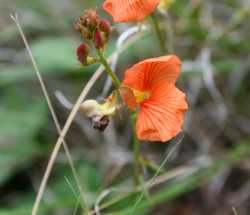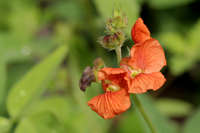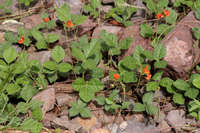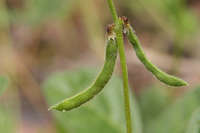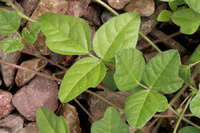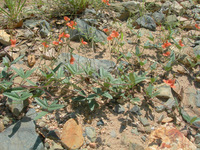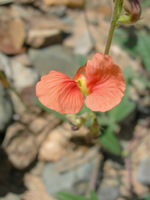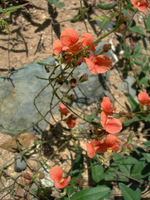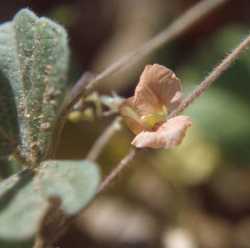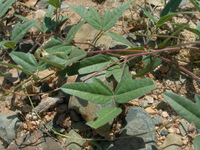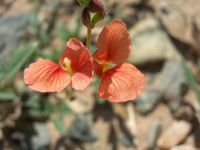Duration: Perennial
Nativity: Non-Native
Lifeform: Forb/Herb
General: Perennial with twining stems, usually 30 cm or more long; herbage pilose, hairs spreading or retrorse.
Leaves: Pinnately trifoliate with orbicular, entire to 3-lobed leaflets, often glabrous with apex and lobes rounded, sometimes lobes are not symmetrical, dark green.
Flowers: On peduncles to 20 cm or more long, several-flowered, corolla brick red, becoming purplish on drying, 10-15 mm long, keel coiled.
Fruits: Linear pods, curved 2-5 cm long, about 3 mm wide, villous.
Ecology: Found on flats and slopes, gravelly to sandy soils from 4,500-7,000 ft (1372-2134 m); flowers August-October.
Distribution: e AZ, s NM, sw TX; south through MEX to C. Amer.
Notes: Resembles other species of beans by being a spreading vine with trifoliate leaves; distinctive by its variable-shaped leaflets, from lanceolate, to rounded, egg-shaped to orbicular and sometimes lobed; especially obvious when available are the brick-red to orange flowers; and semi linear, reflexed pods 3 cm long and 3 mm wide.
Ethnobotany: Unknown
Etymology: Macroptilium comes from macro for large, and the Greek ptilon for wing of feather, while gibbsifolium comes from gibbous or swollen, referring to the way the leaves are swollen to one side.
Synonyms: Macroptilium heterophyllum, Macroptilium heterophyllum var. rotundifolium, Phaseolus heterophyllus, Phaseolus heterophyllus var. rotundifolius
Editor: SBuckley 2010, FSCoburn 2015



